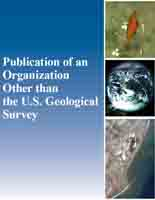This paper describes part of a project to assess the feasibility of producing regional (1:24,000-scale) liquefaction hazard maps that are based-on potential liquefaction-induced deformation. The study area is the central Santa Clara Valley, at the south end of San Francisco Bay in Central California. The information collected and used includes: a) detailed Quaternary geological mapping, b) over 650 geotechnical borings, c) probabilistic earthquake shaking information, and d) ground-water levels. Predictions of strain can be made using either empirical formulations or numerical simulations. In this project lateral spread displacements are estimated and new empirical relations to estimate future volumetric and shear strain are used. Geotechnical boring data to are used to: (a) develop isopach maps showing the thickness of sediment thatis likely to liquefy and deform under earthquake shaking; and (b) assess the variability in engineering properties within and between geologic map units. Preliminary results reveal that late Holocene deposits are likely to experience the greatest liquefaction-induced strains, while Holocene and late Pleistocene deposits are likely to experience significantly less horizontal and vertical strain in future earthquakes. Development of maps based on these analyses is feasible.


